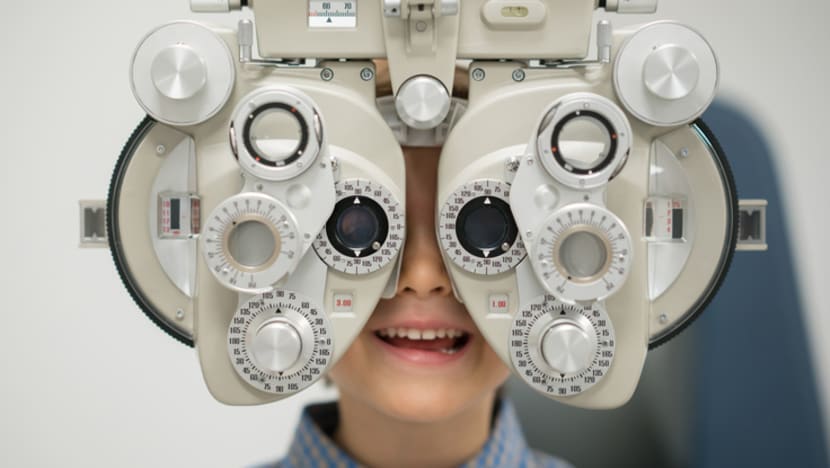Singapore researchers develop AI tool that detects high myopia risk in children
The AI tool uses deep learning algorithms to identify high-risk children, and can assist clinicians in early myopia management and control.

A young patient gets an eye exam by an optician. (iStock)
SINGAPORE: Researchers have developed a new artificial intelligence (AI) tool that can help evaluate children at risk of developing high myopia, a condition that can lead to potentially sight-threatening eye diseases later in life.
Developed by Singapore National Eye Centre (SNEC) and Singapore Eye Research Institute (SERI), the AI tool uses deep learning algorithms to identify these high-risk children, and can assist clinicians in early myopia management and control.
Myopia typically progresses rapidly in children between the age of five and 15, and usually stablises by the time they reach their early 20s, according to the SNEC.
This means that the earlier a child gets myopia, the likelihood of developing high myopia increases as a teenager or in adulthood.
High myopia is defined as severe short-sightedness of above 500 degrees.
As the eye disorder is permanent, researchers behind the AI tool hope that early detection and intervention can lower the incidence of severe near-sightedness among Singaporeans and reduce the risks of complications.
“We are so concerned about preventing high myopia in childhood because it is irreversible,” said Associate Professor Marcus Ang, the principal investigator of the tool.
“Once a child or a teenager develops high myopia, the sight-threatening complications only occur later on in life,” he told CNA’s Singapore Tonight on Wednesday.
In adulthood, high myopia exponentially increases the risks of patients developing vision-threatening problems including glaucoma, cataract, myopic maculopathy and retinal detachment.
MYOPIA A TROUBLING CONCERN
The AI tool was developed amid a worrying nationwide trend that has caught the eye of doctors.
Singapore has one of the highest rates of myopia in the world.
The prevalence of the eye condition and continuous increase in patient numbers have fuelled concerns that visual impairment from high myopia will become a significant public health problem in future, said the SNEC.
More than 65 per cent of children in Singapore become myopic by Primary 6, data from the Ministry of Health (MOH) showed in 2021. More than 80 per cent of young adults suffer from short-sightedness.
The SNEC’s Myopia Centre has also seen its visitor numbers jump over the past few years. Last year, it registered over 6,000 patient visits, more than triple the 1,728 visits in 2019. About 30 per cent of its patients suffer from high myopia.
The new AI tool is expected to help bring down these numbers by tackling cases in young Singaporeans, within the age group when myopia progression is most rapid.
SPEED AND ACCURACY
Current assessment of near-sightedness by clinicians is subjective, and can be complicated by the patients’ ability to remember information.
“When did the child start wearing glasses? That can be limited by recall bias. Do your parents have myopia? Sometimes children, or even parents themselves, don't even know their own prescriptions,” said Assoc Prof Ang, who is also an advisor at the SNEC Myopia Centre.
“The AI tool is completely objective, and does not need subjective input from patients.”
The tool will also speed up the process as it relies on a single baseline assessment, unlike present practice where children are assessed by eye doctors over multiple sessions before diagnosis and treatment.
It uses deep learning algorithms to process retinal images and clinical data of children between six and 12 years old, and evaluates the likelihood of them developing high myopia later on in their teenage years.
This first-of-its-kind innovation is able to predict with at least 90 per cent accuracy, the SNEC said.
Researchers are currently doing a prospective study and testing the usability of the AI algorithm in a real world setting.

















